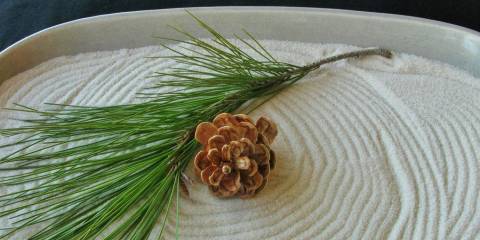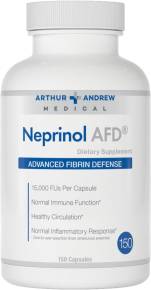Lavender remains one of our most beloved and medicinal healing aromas, most often enjoyed as an essential oil. But how do you make an essential oil from scratch at home with fresh or dry lavender buds?
Unfortunately, it’s not simple!
How Are Essential Oils Made?
Essential oils are generally made with special distillation equipment such as a still, and a lot of plant material.
Lavender is relatively affordable because it’s easy to grow and “only” requires about 16 pounds of lavender buds to make a single one-ounce bottle of essential oil. I’d estimate that each pound of blossoms is approximately the volume of a throw pillow.
Thankfully, the art of hydrosols allows you to craft aromatherapeutic lavender remedies at home in your kitchen without fancy equipment and a lot less plant material.
What is a Hydrosol?
A hydrosol is the first step of making an essential oil.
Simply put, you place aromatic plants and water in a pot, simmer, then capture and reconstitute the steam back into a liquid, yielding distilled water along with a tiny amount of therapeutic and fragrant essential oil.
How are Hydrosols Different Than Essential Oils?
Compared to an essential oil, hydrosols are gentler, safer, and more affordable.
You can use a hydrosol as a facial toner, linen spray, lightly aromatic air mist, and in culinary, medicinal, and cosmetic recipes.
The only downsides are that the aroma is much milder than an essential oil and the shelf life is relatively short.
Do I Need Equipment to Make a Hydrosol?
While professionals would work with a fancy still, often made of copper, to craft a hydrosol, you can repurpose common kitchen equipment to make your own at home.
The set up seems confusing but once you find the equipment that works with what you have on hand, it’s actually quite simple, and your hydrosol will be done in just a few hours.
Choosing an Herb
Any aromatic herb that retains its aroma through the heating process makes a lovely hydrosol. Lavender (fresh or dry) is a favorite, but you can also work with mint, rosemary, lemongrass, holy basil (divine!), etc.
Fresh-from-the-garden herbs work well, but if the dried herb retains the aroma – like lavender does – you can work with it dried, too.
Most ingredients sold as essential oils that don’t cost a fortune will work well. Unfortunately, many sweet and floral scented flowers don’t come across as nicely in a hydrosol, though it can be fun to experiment to see what works and what doesn’t.
Lavender Hydrosol Recipe
The goal here is that you are going to put plant material and water in a large stock pot, prop an empty heat-safe bowl in the middle. Turn the pot lid upside down and either place ice directly in the upturned lid or in a metal mixing bowl on top of the lid.
As you gently simmer the plant material, the steam of the water and essential oils collects on the top of the lid, turns back to liquid due to the ice, and then drips down the upside-down-lid into the bowl. What you catch in the bowl is your hydrosol.
Working with sanitized equipment and containers is preferred.
-
Prop an Empty Bowl in the Middle of the Pot
Some people use a clean brick to prop the bowl up in the water so it doesn’t float around nor come in contact directly with the bottom of the pan.
I personally use a bowl that’s heavy enough to stay put. One of my colleagues, Jessica LaBrie of Blackbird’s Daughter Botanicals, uses a tempered glass measuring cup propped on a mason jar lid.
See what works for you with what you have on hand.
-
Add Water and Plant Material
The water and plant material goes outside of the bowl in the middle (about 2 inches of water and a few cups of fresh or dried lavender blossoms) – the bowl should remain empty so it can capture the finished hydrosol.
-
Cover with an Upturned Lid & Ice
If you can put ice directly on the upturned pot lid, that will more rapidly condense the steam. However, it also creates a sloshy mess that’s difficult to handle as the ice begins to melt.
You can use a turkey baster to remove the liquid and will need to do this throughout the hour or two that your hydrosol is distilling.
I prefer to put ice in a large metal mixing bowl and then place that on top of the lid or simply directly on the open pot – it’s so much easier to handle! And I can step away and just check on it periodically.
For the pot lid, I prefer to use a metal lid because it will be exposed to heat and ice simultaneously, which might break glass or ceramic lids. That said, you might be ok with a tempered glass lid if that’s all you have.
I also prefer a lid without the steam vent hole (but if your lid has a hole, you can try taping it over or simply put a metal mixing bowl on top).
-
Gently Simmer
Bring your water to a gentle boil then turn it down to a simmer so that it’s releasing steam but not boiling vigorously. Let this simmer for 1-2 hours.
Keep an eye on the ice/melted water situation to remove water and replace ice as needed.
-
Remove the Hydrosol
After 1-2 hours, remove the pot from the heat, gently remove the lid. The hydrosol will have collected in the bowl, which you can remove with a measuring cup, spoon, or ladle – be careful not to burn yourself.
Pour this into spray bottles to enjoy!
Shelf Life
Hydrosol is best enjoyed within a few months since it can grow microbes if introduced (water is not a good preservative) and over time, which can appear as white, grey, or green floaties.
I sometimes make an aromatic alcohol extract in good quality vodka and then add some of that to the hydrosol to extend the shelf life – you can make it just like a medicinal tincture (learn how at wintergreenbotanicals.com/tinctures); however, often it’s ready within just a day or two.
You can also keep extra hydrosol in the freezer to extend the shelf life.


